An expert panel at Insurance Times’ BrokerFest 2021 conference earlier this week debated the challenges in the etrading landscape and how technology could provide a solution
BrokerFest 2021: The current challenges within the etrading environment include the speed of response for referrals, being able to speak to someone that has decision-making authority and having a seamless customer journey.
A further challenge is getting information back to the customer.

Speaking during a panel session at Insurance Times’ BrokerFest 2021 conference on Monday 11 October, Jon Newall, former independent broker and etrade evangelist, told delegates that ultimately this communication responsibility lies with brokers.
Despite these challenges, the use of data within etrading is providing some fantastic opportunities for brokers and insurers to learn more about their customers, for example, through the use of machine learning.
Giles Baxter, chief information officer at Open GI, explained: “What do we know about [the customer] as an individual? What do we know about the property that [they] are trying to insure? How do we enrich what the broker can ask for through the myriad of data that is out there? How can we fine tune the data sets that we have to give us more insight?”
According to Paul Tombs, head of SME at Zurich, the insurer is using data enrichment to help it better understand SME risks, for example - in turn, this enables the firm to price risks more accurately, which Tombs believes makes brokers’ lives easier.
Resilience
A fundamental element of successful etrading, however, is the underlying software platform. With big tech names such as Facebook and Amazon recently recording downtime, resilience is a key requirement when brokers are looking at software providers.
Baxter suggested that if an etrading platform is built well - as well as “fed and watered” - this would not be a concern.
However, organising a backup could be useful if a platform fails or experiences downtime. Newall explained: “It’s a key risk for probably most insurers. It’s high on our risk register. One of the key things we do have is copies of everything.”
Tombs added that etrading platforms also need to be more streamlined in order to be cost effective for brokers.
He explained: “It’s a big issue for brokers to have to go onto multiple sites – software houses and extranets, sometimes for the same insurer.

“That’s the key thing for me, trying to reduce emerging referrals, widen the footprint and make things more etradable.”
To support this mentality, Zurich has adopted reduced question sets.
Newall agreed with Tombs, suggesting that as many insurance providers as possible need to be on one platform.
Dynamic customer journeys
Educating brokers on the use and value of etrading platforms is another uphill battle, noted Tombs, despite the fact that many customers today want a fully etraded insurance experience.
Baxter added: “It’s all about dynamic journeys – journeys that change the customer.”
Although the multitude of available software in the market provides brokers with plenty of choice, Baxter recognised that it is “impossible to compete with all of them” - he thinks creating a “dynamic journey” therefore comes down to creating the best ecosystem that integrates technology into customer experiences.
Tombs, however, believes that value-added interventions that support clients and brokers also forms part of a dynamic customer journey. This includes product innovations, such as parametric insurance, for example.
Creating a step change
The panel agreed that the Covid-19 pandemic had accelerated the use of technology and etrading in general. Baxter believes this will not revert to where it was pre-pandemic.
Tombs added that technology has enabled “a real step change” in the insurance industry - he believes this is set to continue.
Looking to the future, he said: “The size and complexity of risks will change over time. There will also be a change in the complexity of advice, as well as closer relationships with data.”
In terms of whether insurance buying might go fully automated, Baxter said he cannot see this happening in his lifetime, but he stressed the importance of getting the balance right between technology and more manual processes.
Hosted by comedian and actor Tom Allen, 34 Gold, 23 Silver and 22 Bronze awards were handed out across an amazing 34 categories recognising brilliance and innovation right across the breadth of UK general insurance.
Catch up on BrokerFest 2021
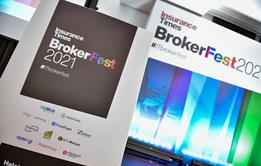
Did you miss any of Monday’s sessions? Check out Insurance Times’ coverage of BrokerFest 2021 below to read insights from across the conference…
- 1
- 2
- 3
- 4
- 5
- 6
- 7
 Currently
reading
Currently
reading
BrokerFest 2021: Challenges in etrading offer opportunities for data enrichment
- 9
- 10
- 11






































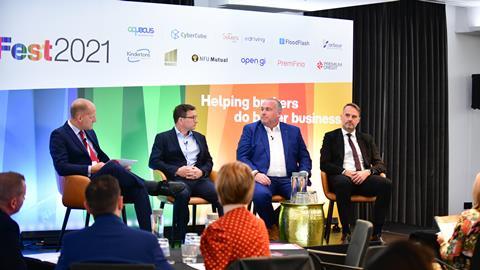






















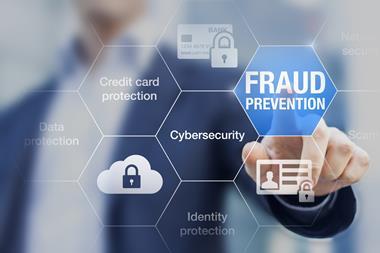

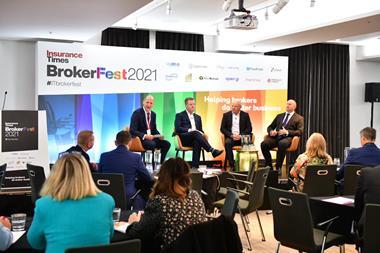
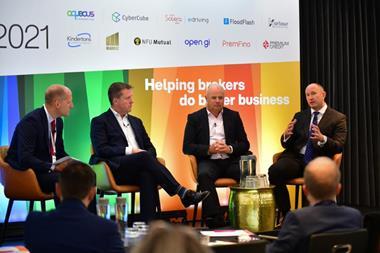

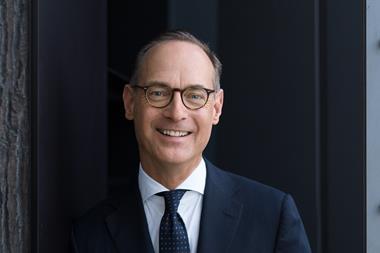







No comments yet